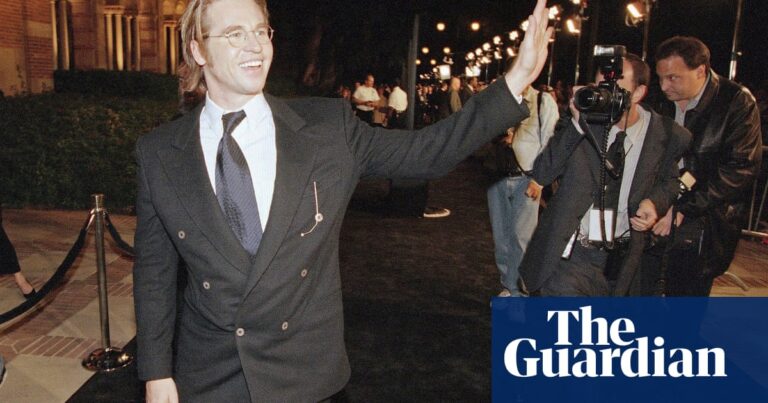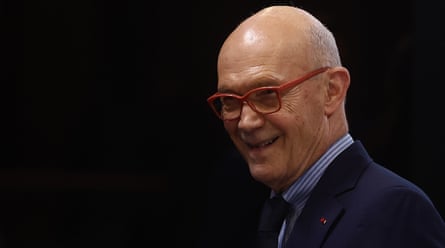S
As I look at the current awards season in film, one question keeps arising: where are the films that cater to white audiences? This might seem like a strange concern in the year 2024, when white people are well represented at all major award shows and the most talked about cultural event was Barbenheimer, a competition between two highly acclaimed biopics about white men and a joyous celebration of the stereotypical blonde. However, it could also be seen as a misdirection of focus when we finally have diverse contenders from East Asian, Black, and Indigenous perspectives to root for, such as Past Lives, American Fiction, The Color Purple, and Killers of the Flower Moon. Despite the increasing diversity in our society, whiteness still dominates the screen, yet remains invisible.
White people still make up the vast majority of lead characters, as well as writers, directors and execs with green-lighting power. And yet, a film or show about white people is rarely ever also about white people. Whereas a film or show that centres Black Britons or Korean Americans or Indigenous Australians is almost always about the experience of being a Black Briton or a Korean American or an Indigenous Australian. Whiteness derives its power as much from its invisibility as it does from its ubiquity, because white humans are depicted as just human – no “white” descriptor necessary – while every other race belongs to some subcategory. This allows white artists a special privilege, as film studies professor Richard Dyer pointed out in White, his 1997 text. They can “claim to speak for the commonality of humanity. Raced people can’t do that … they can only speak for their race”.

Display the image in full screen mode.
Therefore, in order to achieve true racial equality on screen, it is necessary for whiteness to be explicitly acknowledged, discussed, and removed from its dominant position of cultural influence. It is now imperative for white individuals to cultivate their own distinct cinema culture. So, who are the prominent and impactful white filmmakers of today? Who represents the white community? Two names immediately come to mind: Wes Anderson and Sofia Coppola.
The directors have many similarities in addition to their light skin, Taurus zodiac sign, and numerous nominations for the Academy Awards. They are both praised for their meticulous attention to detail and visually rich aesthetics, which have a similar style as high fashion and magazine journalism. This is evident in their recent films, Anderson’s “Asteroid City” and Coppola’s “Priscilla”. They also have a mutual fondness for certain actors, such as Scarlett Johansson (who appeared in Coppola’s breakthrough film “Lost in Translation” in 2003) and Jason Schwartzman (who is Coppola’s cousin and first appeared in Anderson’s “Rushmore” in 1998, at her recommendation). Their work is often described as having a “white” perspective.
Some people view whiteness as being exotic and having a fetishistic interest in other cultures, specifically Asian ones. For others, it is seen as a lack of representation and diversity in casting. This was exemplified in 2015 when Whoopi Goldberg jokingly handed her resume to Jason Schwartzman on The View, pointing out the lack of diversity in his film.
However, there is more to consider. Despite the prevalence of white characters in Anderson’s films, there are still people of color represented, including Danny Glover, Tony Revolori, Jeffrey Wright, and Steve Park. Additionally, although Coppola often focuses on thin, white women in her work, she did break from this pattern with her 2020 film On the Rocks, which starred biracial actress Rashida Jones and Marlon Wayans from White Chicks. Furthermore, the decision to primarily or exclusively tell stories about white individuals is not unique to these filmmakers. There are numerous other white directors who also choose to do so.
Nowadays, intelligent directors who wish to avoid the unintentional portrayal of whiteness in their films and getting caught up in racial controversy, understand the importance of including diversity in their casts. Yorgos Lanthimos’s film Poor Things serves as a sophisticated illustration of this, with strong performances from Egyptian-American actor Ramy Youssef and Black stand-up comedian Jerrod Carmichael. As a result, the film is able to focus on its white leads, Emma Stone and Mark Ruffalo, without solely being about their whiteness.
In Emerald Fennell’s highly-discussed mix of comedy and horror, Saltburn, the character Farleigh (played by Archie Madekwe) is the only notable person of color. In a particular scene, Farleigh suggests that racism is the true reason why the wealthy patriarch Sir Catton refuses to increase his trust fund. This horrifies Felix (played by Jacob Elordi), the attractive heir to the family fortune: “Jesus Christ, Farleigh! Seriously? Is that what you’re insinuating? Bringing race into this? Screw that!” Although Felix’s defensive reaction is somewhat pathetic, we still side with him because people who are as attractive as him can never be at fault. Like Felix, we were also unaware of the names of the Black footmen. But how could we have known? They hardly appear in the film at all. Thus, racism is brushed off as an unimportant side issue, just another way for the lower classes to try and get their hands on money, allowing the film to focus on its true theme: class.

Display the image in full screen mode.
On the other hand, what distinguishes Coppola and Anderson’s movies as prime examples of white cinema is not their handling or mishandling of race, but rather their deliberate avoidance of the topic altogether. This could entail whitewashing the source material (as seen in Coppola’s films The Bling Ring and The Beguiled), or setting the story in a nostalgically white world, detached from any racial tensions (as seen in Anderson’s Moonrise Kingdom, The Royal Tenenbaums, and The Darjeeling Limited). It could also involve indulging in a particular form of white femininity – the modern-day southern belle lifestyle – which is only made possible by the labor of Black people (as symbolized by the rarely-seen servants at Priscilla’s Graceland and the musical innovators of rock’n’roll). Additionally, these films tend to overlook how the Jewish heritage of white actors, such as Schwartzman and Johansson, may influence their racial identities. This is the paradox of white filmmaking – the more oblivious a movie is to matters of race, the more it perpetuates whiteness. Because whiteness often means having the privilege to ignore race, even when it is right in front of you.
The desired outcome is not simply more movies made by white directors – as there are already many – but rather more films that effectively and thoughtfully address whiteness. Fortunately, there is one such movie being considered for awards this year. Unfortunately, it required a director with the exceptional talent, expertise, and background of Martin Scorsese to achieve it.
Ignore the advertisement for the newsletter.
after newsletter promotion
Hollywood’s first truly “revisionist” western, Killers of the Flower Moon, delves into the complex culpability of individual white Americans instead of simply acknowledging the “Injuns” were not all bad. The film portrays the real-life relationship between Osage woman Mollie Kyle (Lily Gladstone) and white World War I veteran Ernest Burkhart (Leonardo DiCaprio) as a twisted love story, a gripping crime thriller, and a thought-provoking allegory of settler-colonialism. What sets this film apart is its recognition of the limitations of director Scorsese’s perspective, rather than claiming to speak for all of humanity. By silencing its Osage characters, particularly Mollie’s literal lack of dialogue, the film acknowledges that it is not in a position to tell their story and makes space for Indigenous filmmakers to do so. This is already happening with other projects such as the TV series Reservation Dogs and Gladstone’s other film, the reservation drama Fancy Dance.
In the end, it is not fair to expect white film-makers to improve their representation by including more people of color in their films. Coppola, Anderson, and all other independent film-makers should have the freedom to create their films as they see fit and cast whoever they choose. Anything else would be a failure of artistic expression.
Instead, our twofold expectation should be this: 1) The industry affords more film-makers of colour the same creative freedoms and commercial opportunities that are now afforded white film-makers, and 2) That the film culture – including the film-makers themselves – develop the confidence, insight and language to discuss and dethrone white cinema. In the meantime, I’m still holding out hope for that Whoopi-Wes collab.
-
Ellen E Jones’ book, Screen Deep, is available for purchase at the Guardian Bookshop for £25. To support the Guardian and Observer, you can order your copy at guardianbookshop.com. Additional delivery fees may apply. You can also join Ellen E Jones for a discussion on her book and the upcoming awards season at a Guardian Live event on 15 February. Tickets are available for purchase here.
Source: theguardian.com





















